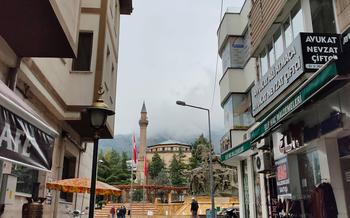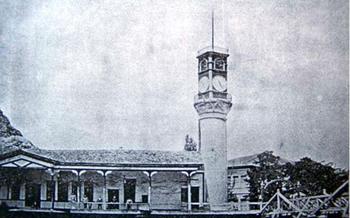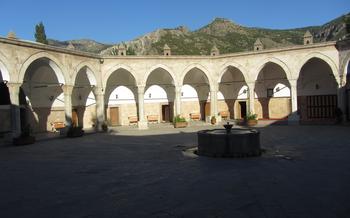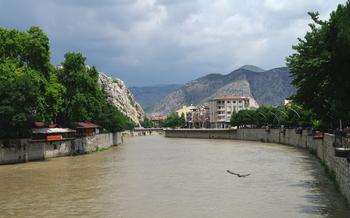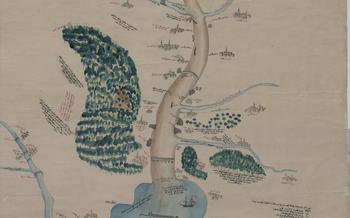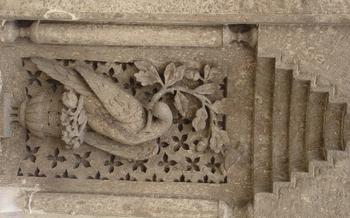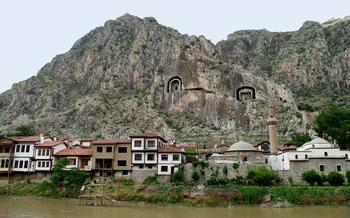
Amasya Üçgöz Bridges
- Amasya Üçgöz Bridges: A Historical Masterpiece
- Location and Accessibility
- Exploring the Bridges
- The Yeşilırmak River: A Natural Wonder
- Scenic Views and Photo Opportunities
- River Activities
- Importance of the River
- Historical Significance
- Amasya Castle: A Symbol of Strength
- Unique Features and Panoramic Views
- Tips for Exploring the Castle Grounds
- The Rock Tombs of Amasya: A Journey Through Time
- The Great Mosque of Amasya: A Place of Worship
- The Museum of Amasya: Uncovering the Past
- The Old Town of Amasya: A Walk Through History
- The Ferhat Water Channel: An Engineering Marvel
- Tips for Tracing the Route of the Water Channel
- Shopping in Amasya: A Treasure Trove
- Amasya Cuisine: A Culinary Delight
- Insider Tip: Off-the-Beaten-Path Gems
Amasya Üçgöz Bridges: A Historical Masterpiece
The Amasya Üçgöz Bridges, also known as the Three-Eyed Bridges, are a testament to the rich history and cultural heritage of the city of Amasya in Turkey. These iconic bridges, spanning the Yeşilırmak River, have stood the test of time, showcasing architectural brilliance and enduring symbolism.
Built in the 13th century during the reign of the Seljuk Turks, the bridges were commissioned by the emir, Seyfeddin Beg. Their construction was a remarkable feat of engineering, showcasing innovative techniques and a deep understanding of structural mechanics. The bridges feature pointed arches, a common architectural element in Islamic architecture, which provide stability and withstand the force of the river's currents.
The symbolism associated with the bridges is intriguing. The three arches represent the three main religions that have coexisted in Amasya throughout history: Islam, Christianity, and Judaism. This symbolism reflects the city's rich cultural tapestry and its history of tolerance and coexistence.
Legend has it that the bridges were built by a young man named Ferhat, who was deeply in love with a beautiful woman named Şirin. To prove his love, Ferhat was tasked with carving a channel through the mountain to bring water to the city. He worked tirelessly, and as he neared completion, he heard a rumor that Şirin had died. Heartbroken, Ferhat struck the final blow with his pickaxe, splitting the rock and creating the third bridge.
Whether history or legend, the Amasya Üçgöz Bridges stand as a symbol of architectural ingenuity, cultural diversity, and enduring love. They are a must-visit attraction for anyone interested in exploring the rich heritage of Turkey and experiencing the charm of Amasya.
Tips for Capturing the Perfect Photo:
- Arrive early in the morning or late in the afternoon to capture the best light for photography.
- Use a tripod to stabilize your camera and avoid blurry shots.
- Experiment with different angles and perspectives to create unique compositions.
- Incorporate the surrounding scenery, such as the river, mountains, and city skyline, into your shots.
- Play with reflections in the water to add depth and interest to your photographs.
Location and Accessibility
The Amasya Üçgöz Bridges are located in the heart of Amasya, a city in northern Turkey renowned for its stunning natural beauty and rich cultural heritage. Their exact address is Merzifon Yolu Caddesi, Merkez, 05100 Amasya. To reach the bridges, visitors can either drive or take public transportation.
For those arriving by car, there are several parking options available near the bridges. The most convenient option is the public parking lot located just a few steps away from the bridges. Alternatively, visitors can park on the nearby streets, where parking is generally free.
If you prefer public transportation, you can take a bus or minibus to the city center and then walk to the bridges. The journey takes approximately 10-15 minutes.
Once you arrive at the Üçgöz Bridges, you will be greeted by a breathtaking sight. The three bridges, each with its unique architectural features, span the Yeşilırmak River, creating a picturesque landscape that will leave you in awe.
Exploring the Bridges
Whether you choose to explore the Amasya Üçgöz Bridges with a knowledgeable guide or wander at your own pace, there's a wealth of history and beauty to discover. Take your time crossing each bridge, savoring the intricate details and symbolism that adorn them. Admire the pointed arches, delicate carvings, and sturdy stonework that have withstood the test of time.
The Kral Kaya Köprüsü (King's Rock Bridge) is the oldest and most impressive of the three. Its massive stone piers and vaulted arches create a sense of awe, while the intricate carvings on its parapets tell stories of battles and conquests. The Burmalı Köprü (Twisted Bridge) is a marvel of engineering, with its unusual spiral staircase that leads to a viewing platform. From here, you can enjoy breathtaking panoramas of the city and the surrounding countryside.
Finally, the Taş Köprü (Stone Bridge) is the most recent of the three bridges, built in the 15th century. It features a series of graceful arches that reflect beautifully in the waters of the Yeşilırmak River. As you cross each bridge, pay attention to the hidden details that reveal the rich history and symbolism of these architectural masterpieces.
A typical visit to the Amasya Üçgöz Bridges takes around 1-2 hours, depending on your pace and interest in photography. Remember to bring your camera to capture the stunning views and unique architectural features of these iconic structures.
The Yeşilırmak River: A Natural Wonder
The Yeşilırmak River, also known as the Iris River, is a stunning natural wonder that flows through the heart of Amasya. This picturesque river is a central part of the city's landscape and provides breathtaking views that will captivate any visitor.
Scenic Views and Photo Opportunities
As you stroll along the riverbanks, you'll be greeted by a panorama of natural beauty. The river meanders gracefully through the city, creating a serene and peaceful atmosphere. The lush greenery that lines the riverbanks adds to the charm, providing a vibrant contrast to the turquoise waters. Whether you're looking to capture stunning photographs or simply soak in the tranquility, the Yeşilırmak River is a must-visit destination.
River Activities
In addition to its scenic beauty, the Yeşilırmak River offers a range of activities for visitors to enjoy. Take a leisurely boat ride to admire the city's landmarks from a unique perspective. The river is also a popular spot for fishing, with anglers hoping to catch a variety of freshwater fish. For those seeking a more adventurous experience, kayaking and rafting are also available, allowing you to explore the river's rapids and hidden coves.
Importance of the River
Beyond its recreational value, the Yeşilırmak River plays a vital role in the local ecosystem. It provides a habitat for a diverse range of aquatic life, including fish, turtles, and waterbirds. The river's waters also irrigate the surrounding agricultural lands, supporting the livelihoods of local farmers.
Historical Significance
Throughout history, the Yeşilırmak River has been an important trade route, connecting Amasya to other regions of Anatolia. Merchants would transport goods along the river, contributing to the city's economic prosperity. The river's strategic location also made it a target for various empires, including the Romans, Byzantines, and Ottomans.
Amasya Castle: A Symbol of Strength
The city of Amasya is not only adorned with natural wonders but also boasts a rich historical heritage, exemplified by the imposing Amasya Castle. This formidable structure, perched majestically atop a hill overlooking the Yeşilırmak River, served as a strategic stronghold throughout history, guarding the city against potential invaders.
Constructed in the 13th century by the Seljuk Sultanate, Amasya Castle represents a testament to their architectural prowess and military might. Its massive stone walls and imposing towers, still standing tall after centuries, speak volumes about the castle's resilience and strategic importance.
Unique Features and Panoramic Views
Amasya Castle is not just a defensive fortress but also a masterpiece of architectural design. Its unique features include a series of secret passages and chambers, adding an aura of mystery and intrigue to the castle's history. Visitors can explore these hidden spaces, imagining the stories they hold from bygone eras.
The castle's most captivating aspect is undoubtedly the breathtaking panoramic view it offers. From the castle's ramparts, visitors can feast their eyes upon the stunning cityscape, the meandering Yeşilırmak River, and the lush green valleys that stretch as far as the eye can see. This unparalleled vista makes Amasya Castle a must-visit destination for anyone seeking to capture the essence of this historic city.
Tips for Exploring the Castle Grounds
To fully appreciate the grandeur of Amasya Castle, it is recommended to set aside ample time for exploration. Allow yourself to wander through the castle's courtyards, admire the intricate carvings and inscriptions adorning its walls, and soak in the atmosphere of its ancient chambers.
Be sure to climb to the highest point of the castle to experience the awe-inspiring panoramic views. Capture the beauty of the surrounding landscape with your camera, but remember to savor the moment and appreciate the tranquility and serenity that envelop this historic site.
The Rock Tombs of Amasya: A Journey Through Time
A testament to the rich history and cultural heritage of Amasya, the Rock Tombs are an intriguing sight that transports visitors back in time. Carved into the sheer rock face of Mount Ilgaz, these ancient tombs date back to the Hellenistic period and were used as burial chambers by the kings of Pontus. The intricate carvings and architectural styles of the tombs showcase the exceptional craftsmanship of their creators.
The tombs are adorned with various motifs and symbols, offering glimpses into the religious beliefs and cultural practices of the ancient Pontic civilization. Some tombs feature intricate floral patterns and geometric designs, while others depict mythological creatures and scenes from Greek mythology. The symbolism associated with these carvings provides valuable insights into the spiritual and cultural beliefs of the time.
To fully appreciate the grandeur of the Rock Tombs, visitors should take their time to explore each tomb and discover its unique features. The tombs are accessible via a series of steps and pathways that wind through the rugged terrain, offering breathtaking views of the surrounding landscape. The best time to visit is during the early morning or late afternoon when the sunlight casts dramatic shadows on the rock formations, creating a magical atmosphere.
Photography enthusiasts will find ample opportunities to capture stunning images of the Rock Tombs. The unique rock formations, intricate carvings, and panoramic views provide a picturesque backdrop for memorable photos. It is recommended to bring a wide-angle lens to capture the scale and grandeur of the tombs, as well as a tripod to stabilize the camera for sharp shots.
The Great Mosque of Amasya: A Place of Worship
Standing tall and proud in the heart of Amasya, the Great Mosque carries within its walls a rich tapestry of history, spirituality, and architectural brilliance. Built in the 15th century during the reign of the Ottoman Sultan Bayezid II, this sacred edifice reflects the architectural prowess of its time and remains a beacon of faith for the city's devout Muslim population.
The mosque's design showcases a harmonious blend of Ottoman and Seljuk architectural styles, with its majestic dome, intricately carved minarets, and elegant arches. The prayer hall, adorned with vibrant Iznik tiles and intricate calligraphy, exudes a serene and awe-inspiring atmosphere. Visitors are welcomed into a world of peace and tranquility, where the echoes of centuries-old prayers still linger.
Beyond its religious significance, the Great Mosque of Amasya is also a testament to the city's historical evolution. It has witnessed the rise and fall of empires, the ebb and flow of civilizations, and the unwavering devotion of the local community. Today, it stands as a symbol of unity, tolerance, and the enduring power of faith.
For those seeking a deeper spiritual connection or a glimpse into the heart of Islamic culture, the Great Mosque of Amasya offers a truly immersive experience. With its serene atmosphere, stunning architecture, and profound religious significance, it is a place where history, spirituality, and architectural beauty converge.
The Museum of Amasya: Uncovering the Past
In the heart of Amasya, the Museum of Amasya stands as a testament to the city's rich history and cultural heritage. Housing a diverse collection of artifacts, this museum offers a fascinating journey through the ages.
Exhibits showcasing the history and culture of Amasya are arranged in chronological order, providing visitors with a comprehensive understanding of the region's development. From ancient civilizations to the Ottoman Empire, the museum's collection includes artifacts from various periods and civilizations.
Don't miss the intriguing collection of ancient coins, pottery, and jewelry that provide glimpses into the daily lives of Amasya's ancestors. Admire the intricate carvings and inscriptions on stone tablets, offering insights into the region's religious beliefs and practices.
Interactive displays and educational programs make the Museum of Amasya an engaging experience for visitors of all ages. Learn about the region's traditional crafts, such as carpet weaving and pottery, through interactive demonstrations. Participate in educational workshops to gain hands-on experience and create your own souvenirs.
To make the most of your visit, consider joining a guided tour or hiring an audio guide. Knowledgeable guides can provide insights into the significance of the artifacts and bring the museum's collection to life.
Whether you're a history buff, an art enthusiast, or simply curious about the rich tapestry of Amasya's past, the Museum of Amasya is a must-visit destination. Prepare to be captivated as you uncover the hidden treasures of this ancient city.
The Old Town of Amasya: A Walk Through History
Immerse yourself in the captivating allure of Amasya's Old Town, a treasure trove of architectural heritage and vibrant local life. Stroll along the labyrinthine cobblestone streets, lined with traditional Ottoman houses that whisper tales of a bygone era. Admire the intricate carvings and colorful facades that adorn these historic structures, each one a testament to the artistry and craftsmanship of the past.
Discover hidden gems tucked away in the Old Town's nooks and crannies, such as charming cafes nestled amidst ancient walls, inviting you to savor a cup of Turkish coffee while soaking in the timeless atmosphere. Browse through the local shops and bazaars, where you can find unique souvenirs and handicrafts that reflect the rich cultural heritage of Amasya.
Don't miss the opportunity to indulge in the mouthwatering local cuisine at one of the many traditional restaurants in the Old Town. Savor the flavors of authentic Turkish dishes, prepared with fresh, seasonal ingredients and infused with the warmth of Anatolian hospitality.
As you wander through the Old Town, let your imagination transport you back in time, when merchants and travelers from far-off lands converged on these streets, exchanging goods and stories that shaped the tapestry of Amasya's history. Embrace the vibrant energy of this living museum, where the past and present intertwine to create a truly unforgettable experience.
The Ferhat Water Channel: An Engineering Marvel
Among the many historical wonders of Amasya, the Ferhat Water Channel stands out as a testament to human ingenuity and engineering prowess. Constructed during the reign of the Ottoman Sultan Murad III, the channel was designed to divert water from the Yeşilırmak River to the city's center, providing a vital source of irrigation and drinking water.
The channel's construction is a marvel of engineering, spanning over 50 kilometers and featuring a series of tunnels, aqueducts, and reservoirs. Its route winds through rugged terrain, showcasing the skill and determination of the builders who carved a path through mountains and valleys.
The Ferhat Water Channel played a crucial role in the development of Amasya, transforming it into a thriving agricultural center. Its waters nourished the fertile plains, enabling farmers to cultivate a variety of crops and contributing to the city's economic prosperity.
To this day, the Ferhat Water Channel remains an important part of Amasya's infrastructure, supplying water to the city's residents and irrigating the surrounding fields. Its historical significance and engineering brilliance make it a must-visit attraction for anyone interested in the region's rich history and cultural heritage.
Tips for Tracing the Route of the Water Channel
-
Follow the Signs: The route of the Ferhat Water Channel is well-marked with signs, making it easy to follow.
-
Start at the Source: Begin your exploration at the channel's starting point near the village of Eğerli.
-
Explore the Tunnels: The channel features several tunnels carved through solid rock, offering a unique and atmospheric experience.
-
Admire the Aqueducts: Marvel at the impressive aqueducts that carry the water across valleys and ravines.
-
Visit the Reservoirs: Stop at the various reservoirs along the route to learn about their role in regulating the water flow.
-
Enjoy the Scenery: The channel's route passes through picturesque landscapes, providing ample opportunities for stunning photos.
-
Take a Guided Tour: Consider joining a guided tour to gain insights into the history and engineering of the channel.
Shopping in Amasya: A Treasure Trove
Amasya is a shopper's paradise, offering a treasure trove of unique handicrafts, souvenirs, and local products. From intricate carpets and exquisite jewelry to finely crafted ceramics and textiles, there's something for every taste and budget.
Local Handicrafts and Souvenirs:
- Discover one-of-a-kind handicrafts made by local artisans, such as hand-woven carpets, embroidered textiles, and decorative pottery.
- Take home a piece of Amasya's cultural heritage with traditional souvenirs like miniature replicas of the Amasya Üçgöz Bridges or intricately designed jewelry inspired by the region's history.
Unique Carpets, Jewelry, and Ceramics:
- Visit the local carpet shops to find stunning handmade carpets in various sizes, colors, and patterns, each telling a unique story.
- Browse the jewelry stores for exquisite pieces crafted from gold, silver, and semi-precious stones, showcasing the skill and artistry of local craftsmen.
- Explore the ceramics shops for a wide selection of plates, vases, and decorative items, each adorned with intricate patterns and vibrant colors.
Bargaining Tips and Recommended Markets:
- Don't be afraid to bargain with the shopkeepers; it's a part of the local culture and can lead to great deals.
- Visit the Old Town's market, where you can find a wide variety of goods, from fresh produce to handmade crafts, all at affordable prices.
- For a truly authentic experience, head to the weekly farmers' market, where local farmers sell their fresh produce, dairy products, and homemade delicacies.
Tips for Supporting Local Artisans and Businesses:
- Make an effort to buy directly from local artisans and craftsmen to support their livelihoods and preserve traditional skills.
- Ask about the artisans' stories and the inspiration behind their creations; each piece carries a unique tale.
- Consider joining a guided shopping tour to learn more about the local crafts and support community-based initiatives.
Amasya Cuisine: A Culinary Delight
The city of Amasya offers a tantalizing culinary journey that will delight your taste buds. Indulge in the flavors of traditional Turkish cuisine with a modern twist. Savor the aromas of freshly baked pastries and traditional Turkish coffee as you stroll through the cobblestone streets. Amasya's cuisine is renowned for its fresh, seasonal ingredients and unique flavors.
Must-try local dishes include "Amasya Çöreği," a sweet pastry filled with walnuts and pistachios, and "Amasya Mantısı," delicate dumplings served with a garlic yogurt sauce. For a taste of hearty Turkish cuisine, try the "Amasya Kebabı," succulent grilled meats served with grilled vegetables and rice. Vegetarian and vegan options are also available, such as "Sebze Güveç," a delicious vegetable stew, and "Mercimek Çorbası," a hearty lentil soup.
To fully immerse yourself in the local culinary scene, visit the city's traditional restaurants and cafes. Ask for recommendations from friendly locals or explore the bustling markets for fresh produce and homemade delicacies. Amasya's vibrant food scene caters to all tastes, ensuring a memorable culinary adventure.
Insider Tip: Off-the-Beaten-Path Gems
Beyond the well-known attractions, Amasya offers a treasure trove of hidden gems waiting to be discovered by curious travelers. Venture off the beaten path and uncover the city's secrets, from secluded viewpoints to charming local markets. Immerse yourself in the vibrant atmosphere of the weekly farmers' market, where you can mingle with locals and find fresh, organic produce, handmade crafts, and traditional delicacies. Seek out the hidden waterfalls nestled within the city's lush green valleys, where you can escape the hustle and bustle and enjoy a tranquil picnic surrounded by nature's beauty. For a unique perspective of the city, embark on a hot air balloon ride at sunrise and marvel at the breathtaking panoramic views as the sun casts a golden glow over Amasya's landmarks. With a little exploration and an open mind, you'll uncover the hidden treasures that make Amasya a truly special destination.
